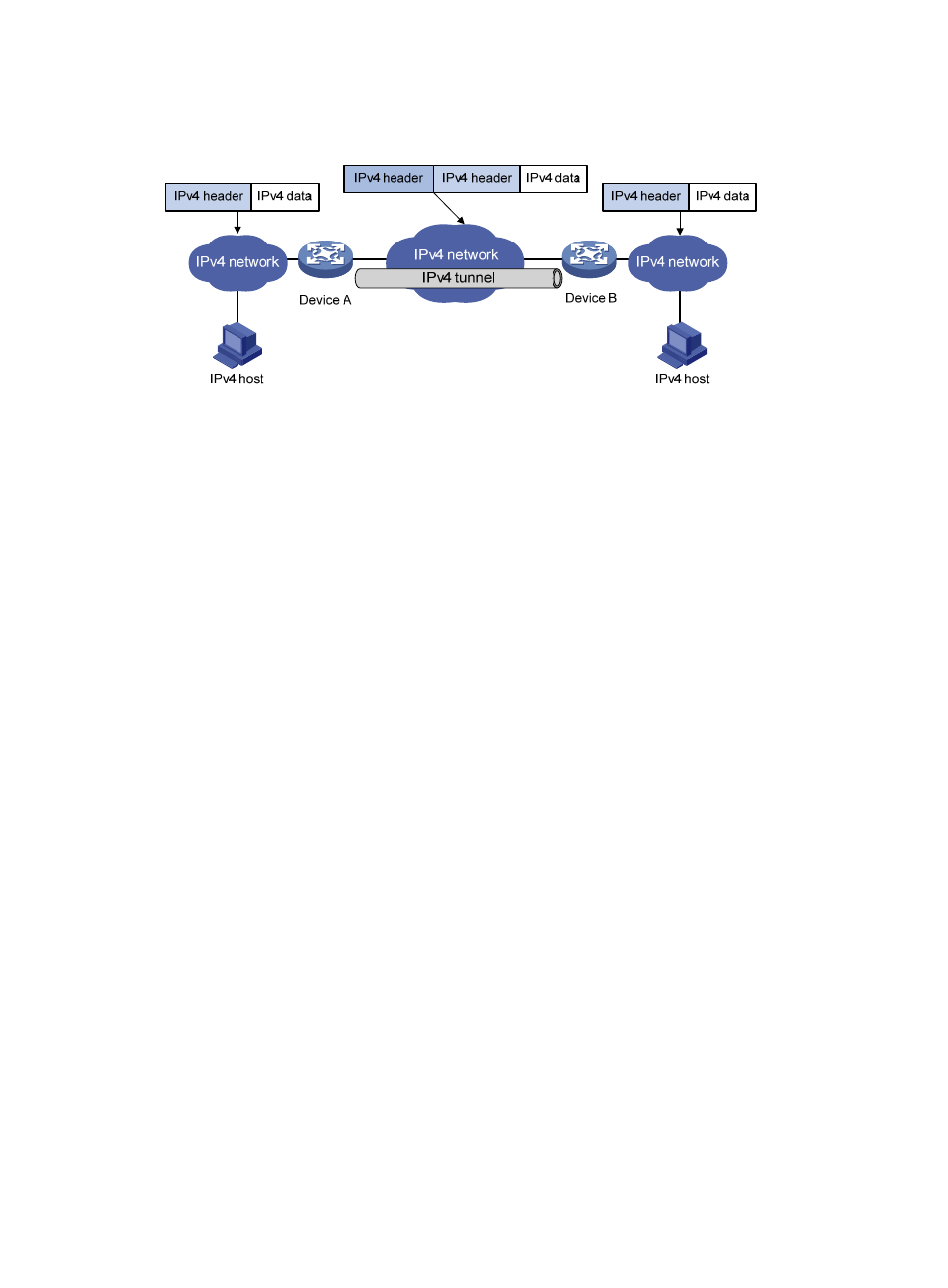Encapsulation and de-encapsulation, Ipv4 over ipv6 tunneling, Introduction – H3C Technologies H3C SecPath F1000-E User Manual
Page 94

82
Encapsulation and de-encapsulation
Figure 67 Principle of IPv4 over IPv4 tunneling
Packets traveling through a tunnel undergo encapsulation and de-encapsulation processes, as shown
in
•
Encapsulation
The encapsulation follows these steps:
a.
Device A receives an IP packet from an IPv4 host and submits it to the IP protocol stack.
b.
The IP protocol stack determines how to forward the packet according to the destination
address in the IP header. If the packet is destined for the IPv4 host connected to Device B,
Device A delivers the packet to the tunnel interface.
c.
The tunnel interface encapsulates the packet into an IPv4 packet and submitted to the IP
protocol stack for processing. The IP protocol stack determines the outgoing interface of the
tunnel according to the IP header, and sends the packet out.
•
De-encapsulation
The de-encapsulation follows these steps:
a.
After receiving the packet, Device A delivers it to the IP protocol stack, which then checks the
protocol number in the IP header.
b.
If the protocol number is IPv4 (indicating an IPv4 packet is encapsulated within the packet), the
IP packet is sent to the tunnel module for de-encapsulation.
c.
The de-encapsulated IP packet is sent back to the IP protocol stack for processing.
IPv4 over IPv6 tunneling
Introduction
IPv4 over IPv6 tunneling adds an IPv6 header to IPv4 packets so that the IPv4 packets can traverse an
IPv6 network and reach another IPv4 network.
- H3C SecPath F5000-A5 Firewall H3C SecPath F1000-A-EI H3C SecPath F1000-E-SI H3C SecPath F1000-S-AI H3C SecPath F5000-S Firewall H3C SecPath F5000-C Firewall H3C SecPath F100-C-SI H3C SecPath F1000-C-SI H3C SecPath F100-A-SI H3C SecBlade FW Cards H3C SecBlade FW Enhanced Cards H3C SecPath U200-A U200-M U200-S H3C SecPath U200-CA U200-CM U200-CS
